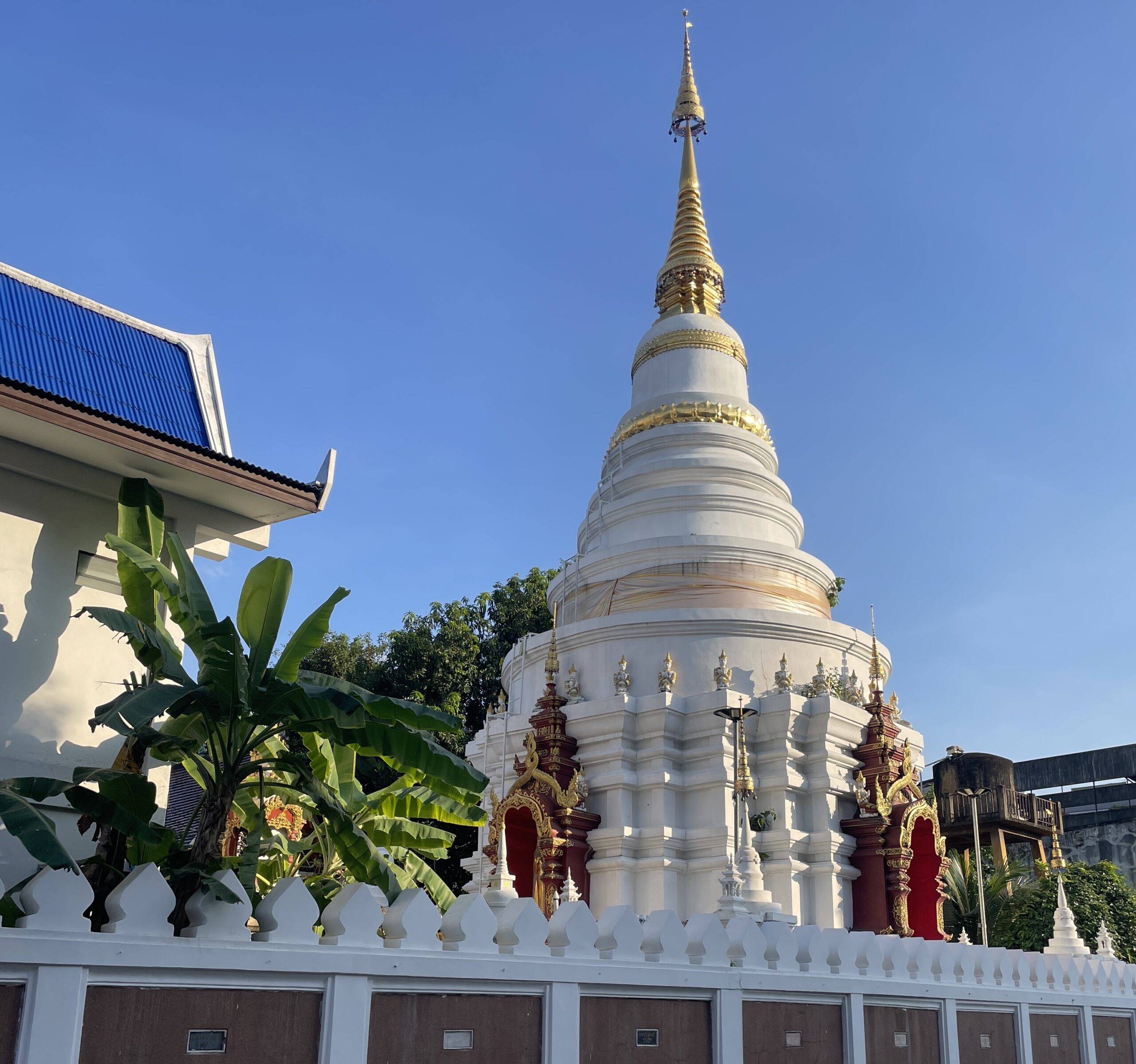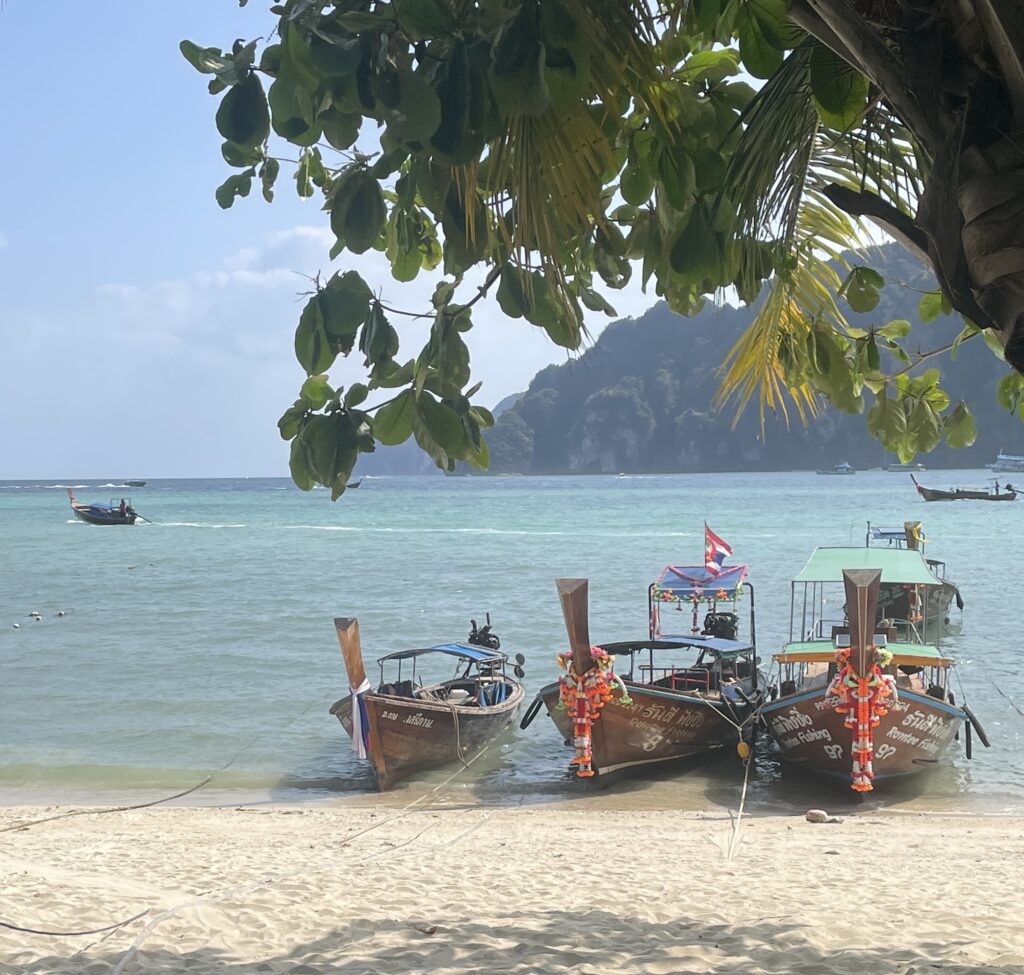21 Best Things to Do in Chiang Mai, Thailand
Chiang Mai is vibrant, layered, serene, and adventurous, often all at once. On the surface, it might just feel like another Thai city.
But spend a few days here, and you’ll begin to sense the rhythm: ancient wats, colonial-era facades, café-driven alleyways, and the buzz of tuk-tuks merging into harmony.
Whether you’re visiting for just a long weekend or setting this as a starting point in your Thailand itinerary, this list goes beyond the usual tourist spots.
Before diving in, if you’re still figuring out which neighborhood fits your trip style, check out my guide to the best areas in Chiang Mai for a breakdown of the city’s top districts.
It’s also worth noting that Chiang Mai is easily one of the best places in Thailand for families, with its relaxed pace, nature-filled surroundings, and hands-on cultural experiences.
This isn’t about hitting every main attraction; it’s about creating meaningful experiences. Let’s dive into the 21 best things to do in Chiang Mai, Thailand, with a few real-world tips and reminders so you can make the best of your visit!
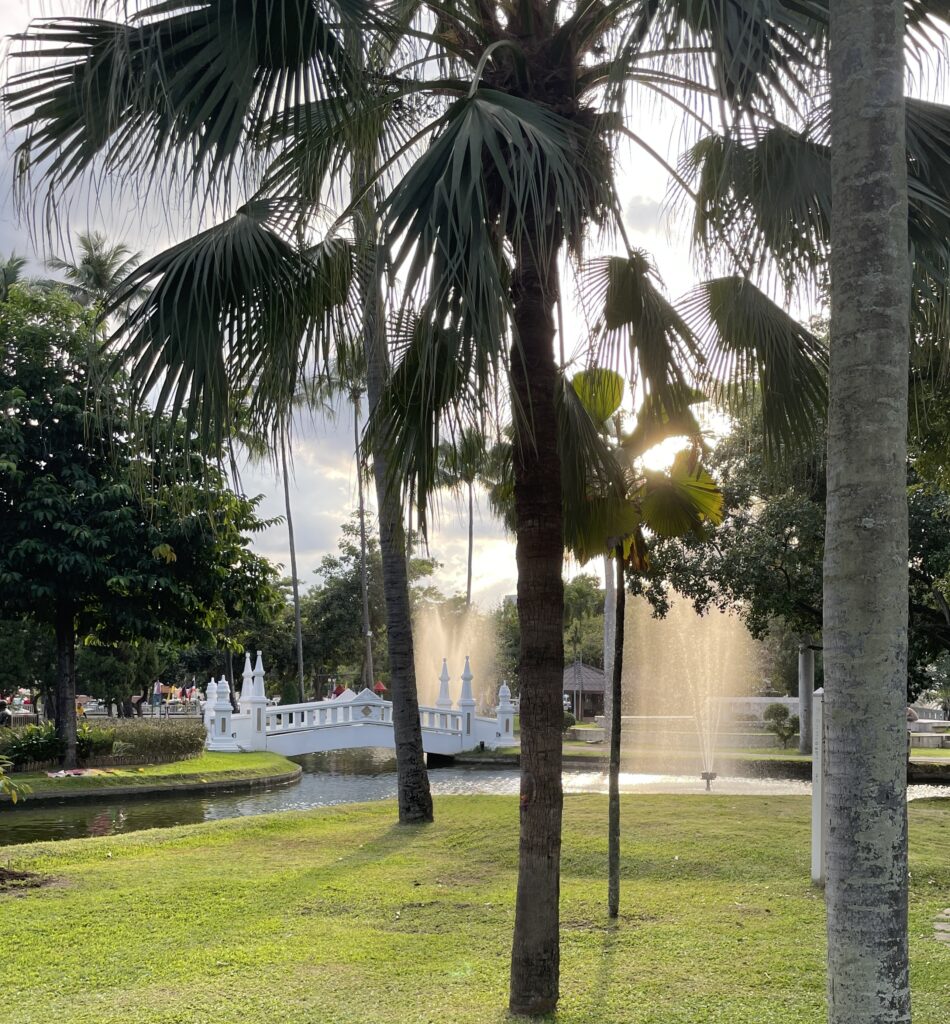
Wander Through the Old City Temples at Sunrise
Chiang Mai’s Old City is where the city pulses most visibly, lantern-lit moats surround crumbling brick walls, monks process in orange robes, and vendors set up street stalls before the sun fully rises.
Inside lie classic temples like Wat Chedi Luang and Wat Phra Singh, which feel almost reverent when visited at dawn.
It’s quiet, calm, and mystical long before tourists arrive. Skip the selfie-station rush later in the day and stroll respectfully during morning chant time.
You’ll often catch residents doing charity alms-giving or monks blessing locals with holy water. Dress modestly, and keep your voice low; this is where you see the soul of Chiang Mai, not just the photos.
Taste Chiang Mai’s Signature Khao Soi
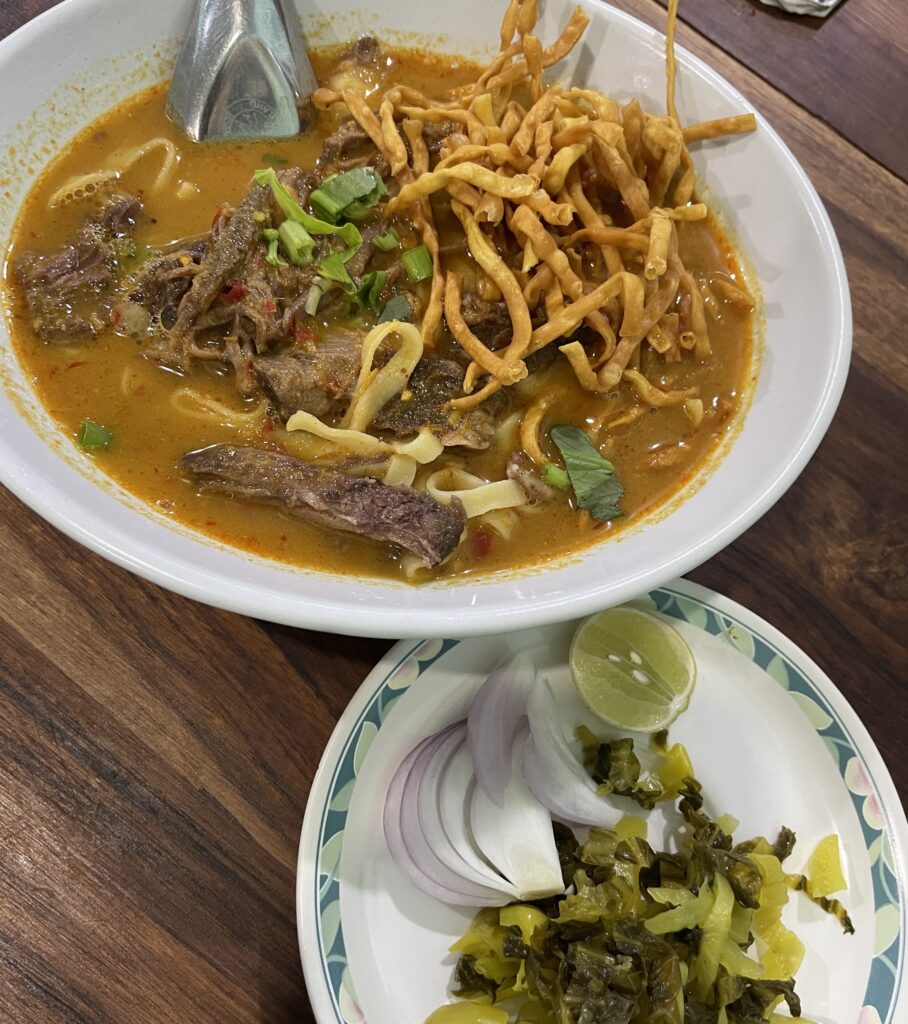
You can’t celebrate Chiang Mai without talking about Khao Soi. This iconic northern Thai dish, creamy coconut curry over soft and crispy egg noodles, is not just food, it’s a flavor pilgrimage.
Unlike other cities, Chiang Mai’s version is rich but never heavy, fragrant but not cloying.
I’ve been to Chiang Mai more times than I can count, and if there’s one dish I never skip, it’s this.
My obsession with Khao Soi runs deep enough that I created an entire guide on the best Khao Soi restaurants in Chiang Mai, where I break down exactly where to go and what to order depending on your vibe.
From street-side legends to sit-down gems, I’ve tried it all. Pro tip: always add pickled greens and extra lime. Whether you’re new to Thai food or already a convert, Khao Soi in Chiang Mai is a culinary rite of passage.
💡 Pro tip: Want to pair a bowl of khao soi with a calm river cruise? This Chiang Mai boat trip does both.
Stroll Through the Night Bazaar & Chang Khlan
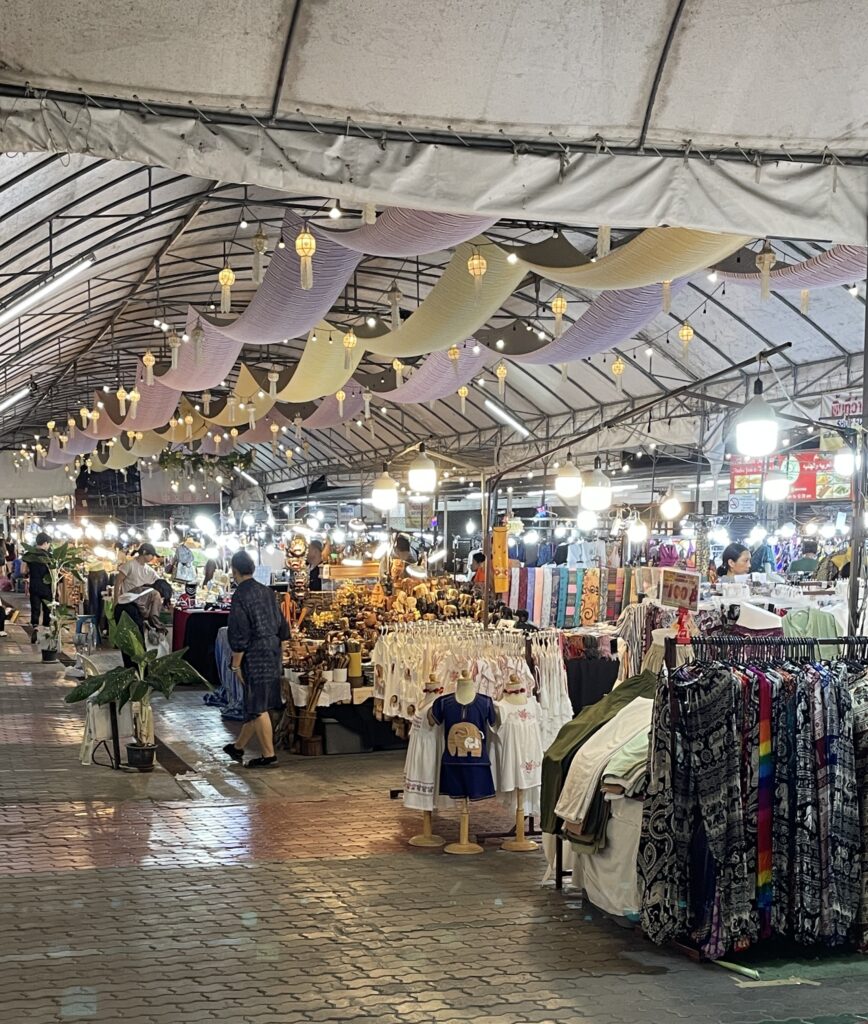
When the sun sets, Chiang Mai shifts Chang Khlan Road becomes a neon-lit maze of textiles, souvenirs, and sizzling food vendors.
The Night Bazaar was born in the 1980s as a few stall pop-ups; today, it’s a bustling hive that crawls until midnight.
Expect street performances, local handicrafts, and stalls cooking everything from grilled pork skewers to mango sticky rice. It’s free to explore, but best enjoyed with small bills, you’ll be tempted.
Just a tip: many vendors leave early on Sundays to set up at the Sunday Walking Street instead, so Chang Khlan feels quieter that evening.
If you have even a few hours in the evening, the Night Bazaar gives you a taste of Chiang Mai’s electric energy next to old-world charm.
Visit Wat Phra That Doi Suthep
You haven’t truly been to Chiang Mai until you’ve taken the winding drive or songthaew up to Wat Phra That Doi Suthep.
Sitting 1,073 meters above sea level, this golden mountaintop temple offers both spiritual insight and a sweeping view of the city.
Built in the 14th century, this is Chiang Mai’s most sacred temple. The climb up the 306-step staircase, flanked by intricate naga serpents, is worth every step. If stairs aren’t your thing, there’s a tram.
Visit early or near sunset to avoid crowds, and don’t forget to walk clockwise around the golden chedi, it’s tradition. Modest clothing is required (cover shoulders and knees).
Explore Nimmanhaemin for Cafes, Boutiques & Street Art
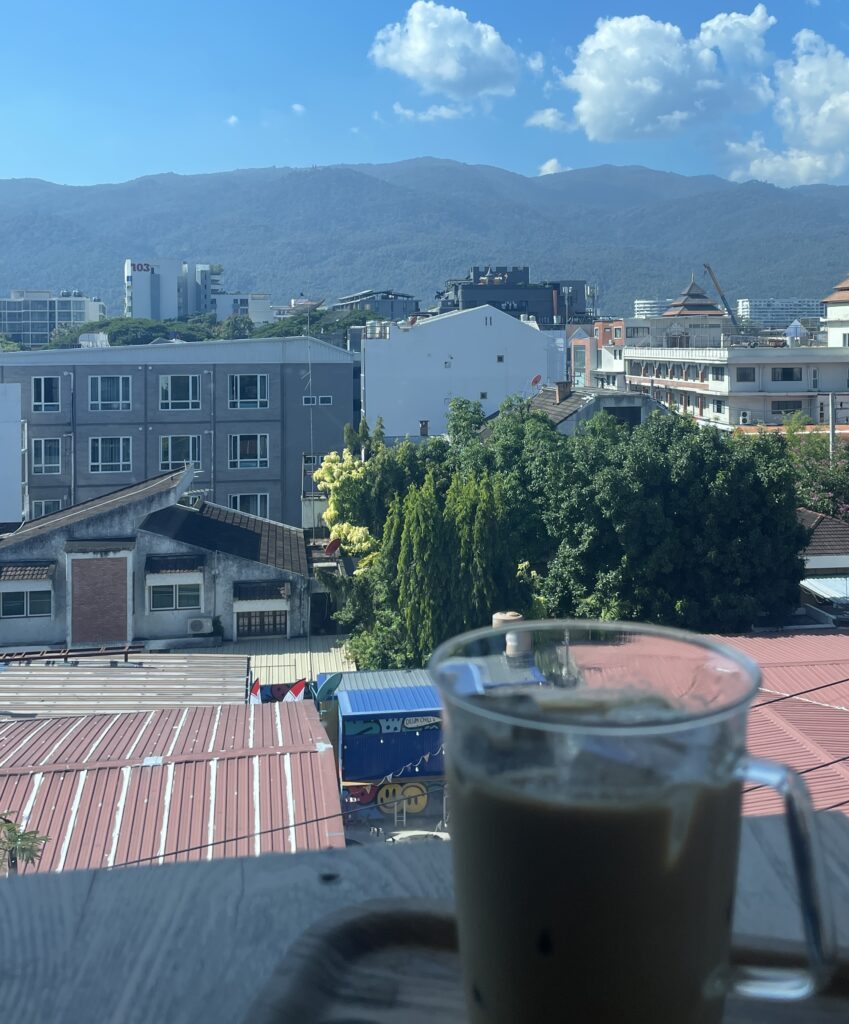
Chiang Mai’s Nimmanhaemin neighborhood, often just called Nimman, is the city’s trendiest district. If the Old City is tradition, Nimman is modern Chiang Mai.
Think: third-wave coffee shops, digital nomad coworking spaces, street art, and fusion restaurants. By the way, if you’re curious where I got this amazing view, check out Fohhide.
Spend a morning hopping cafés (like Ristr8to or Graph Café), then duck into quirky boutiques or pop-up shops around One Nimman or Maya Mall. The area’s vibe is relaxed, creative, and polished without being pretentious.
Evenings in Nimman are about rooftops and live music. It’s also the best spot to people-watch, a mix of young locals, tourists, and expats.
Spend a Day with Elephants (Responsibly)
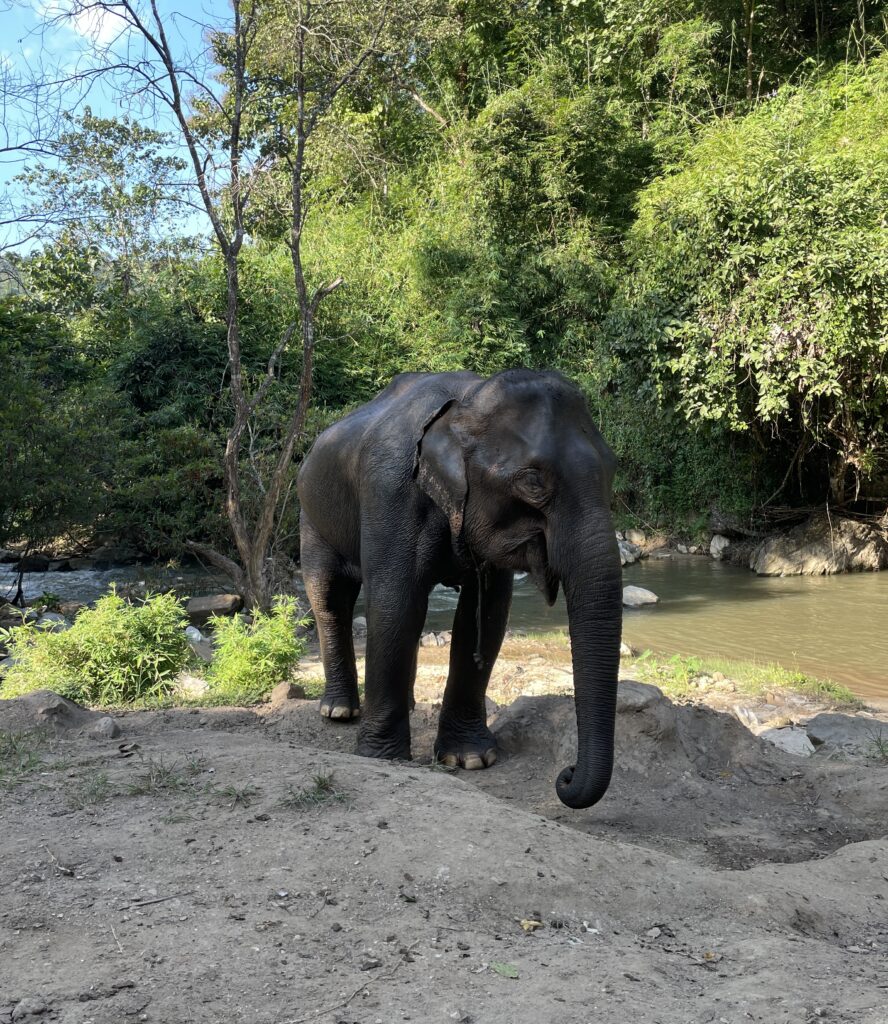
Chiang Mai is one of the best places in Thailand to visit an elephant sanctuary, provided it’s ethical and cruelty‑free.
The standout among these is Elephant Nature Park, located about 60 km north in Mae Taeng valley, founded by animal‑welfare advocate Lek Chailert in the early 2000s.
This sanctuary rescues elephants previously exploited for logging, street performance, or tourist trekking camps.
There’s a strict no‑riding policy, and guests are limited to feeding, walking beside, and observing the elephants in their natural habitat, no tricks and no shows.
Day visits typically include transport from Chiang Mai, a vegetarian lunch, and activities like preparing food for the elephants, walking with them through forest trails, or watching mud‑bathing sessions.
Longer stays and volunteer programs are also available for those wanting a more immersive elephant care experience.
Take a Thai Cooking Class in Chiang Mai
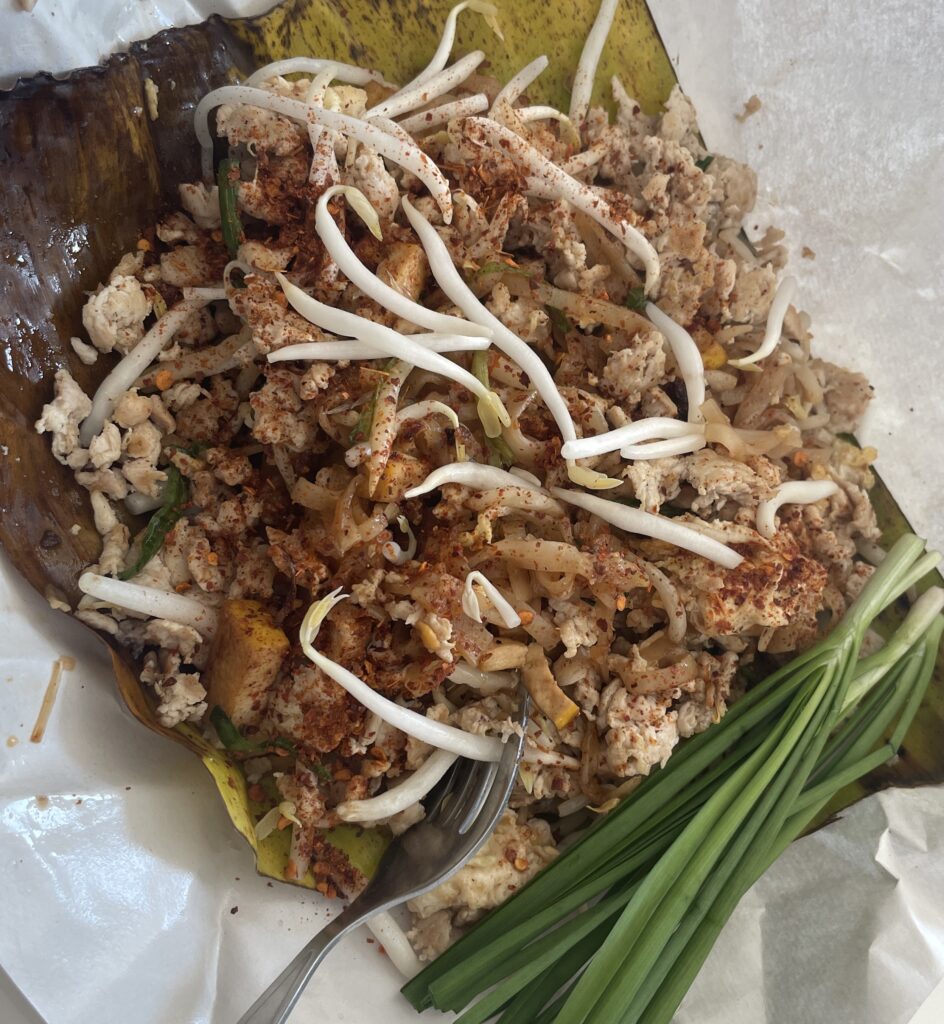
For a fully immersive Chiang Mai cooking class, book one that begins with a morning visit to a local market (like Warorot). You’ll learn to shop for local herbs and spices before heading to a home kitchen or small cooking studio.
Popular dishes include Khao Soi, gaeng hung lay, pad cha, and dessert staples like mango sticky rice. Courses usually wrap around lunchtime, and most include vegetarian options.
You walk away not just full, but with recipes and a deeper connection to Thai ingredients, a perfect Northern Thailand food experience.
And after a day of cooking, you might want to explore some of my favorite affordable eats in Chiang Mai for a taste of the city’s street food and local gems.
Find your perfect Chiang Mai cooking class:
Take a Day Trip to Doi Inthanon National Park
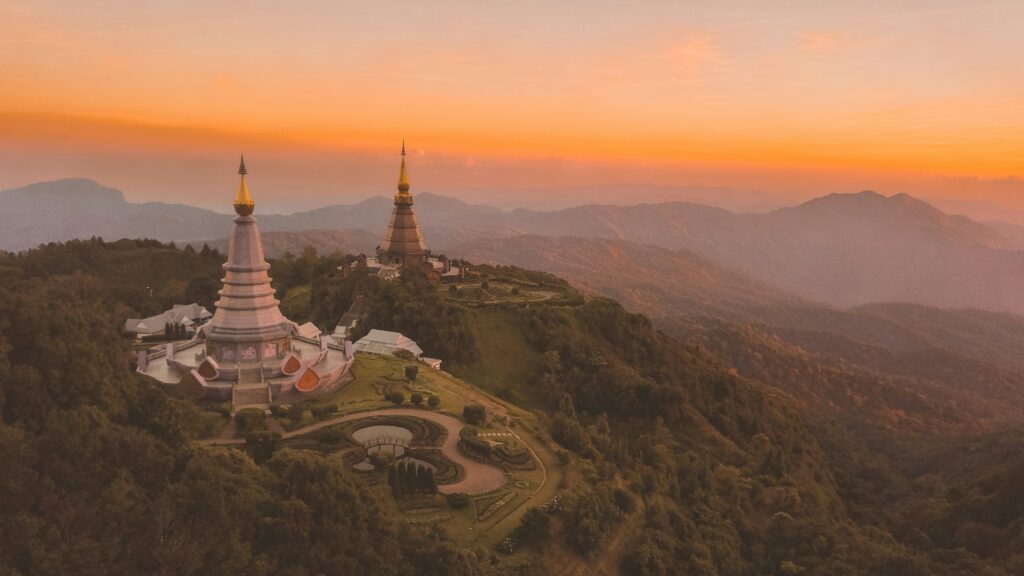
Need a nature break? Doi Inthanon, Thailand’s highest peak, makes for a perfect day trip.
The national park is about 1.5 hours from Chiang Mai and offers everything from scenic waterfalls and pagodas to cloud forest hikes.
Don’t miss the twin royal pagodas (Phra Mahathat Naphamethanidon and Naphaphonphumisiri) or the short hike along the Ang Ka Nature Trail.
Early morning visits mean fewer crowds and a better chance at misty, mystical views. Pack layers, it’s surprisingly chilly at the top.
Relax at a Riverside Cafe in Wat Ket
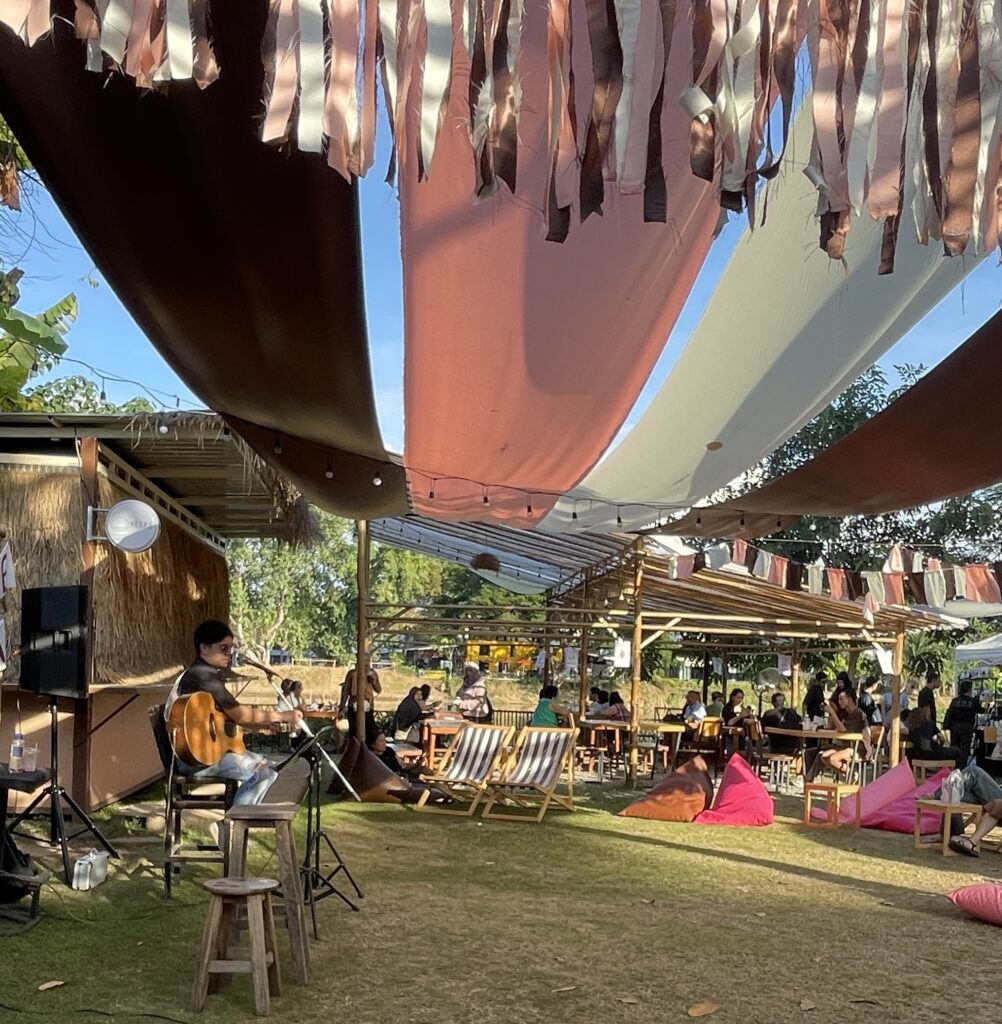
For a quieter, more local side of Chiang Mai, head to Wat Ket on the east side of the Ping River. This area is home to colonial-era buildings, riverside cafes, and boutique hotels.
Grab a coffee at The Baristro or a cocktail at one of the riverfront spots and watch the sunset reflect off the water. It’s especially lovely during golden hour.
If you’re interested in the area’s history, stop by the Wat Ket Karam Museum, which features old photos and memorabilia from Chiang Mai’s past.
Visit the Chiang Mai Night Safari
Unlike a traditional zoo, the Chiang Mai Night Safari is an open-air experience where you can ride trams through different animal zones.
It’s popular with families and couples alike. The park is divided into zones like Predator Prowl and Savannah Safari, and you’ll spot giraffes, lions, tigers, and zebras.
Pro tip: Go around 6:00 PM to see the animals during their active hours and avoid the daytime heat.
Attend a Muay Thai Match
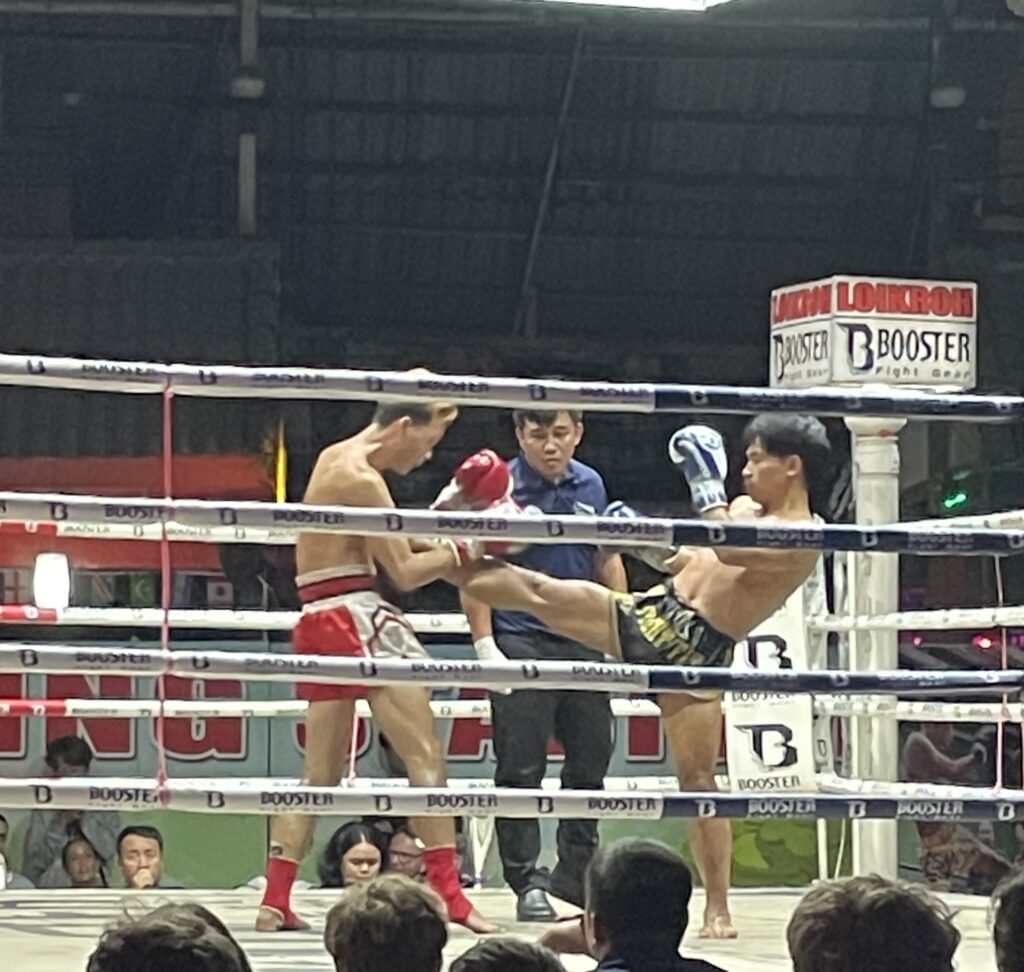
If you’re curious about Thai culture, a Muay Thai fight night is a high-energy way to experience it.
Several arenas in Chiang Mai offer nightly bouts, often with a mix of professionals and aspiring locals.
While some venues feel touristy, others like Thapae Boxing Stadium offer more authentic experiences. Expect loud music, lots of cheering, and lightning-fast kicks. Book a front-row seat if you want to feel the energy and the sweat.
Get a Traditional Thai Massage
After a day of walking or hiking, treat yourself to a Thai massage. Chiang Mai is full of massage shops, from budget spots to high-end spas.
Want something meaningful? Book a massage at Women’s Massage Center by Ex-Prisoners a social enterprise helping former inmates reintegrate through vocational training.
Prices range from $6 for a 1-hour foot massage to $30 for luxury spa treatments.
Experience the Yi Peng Lantern Festival
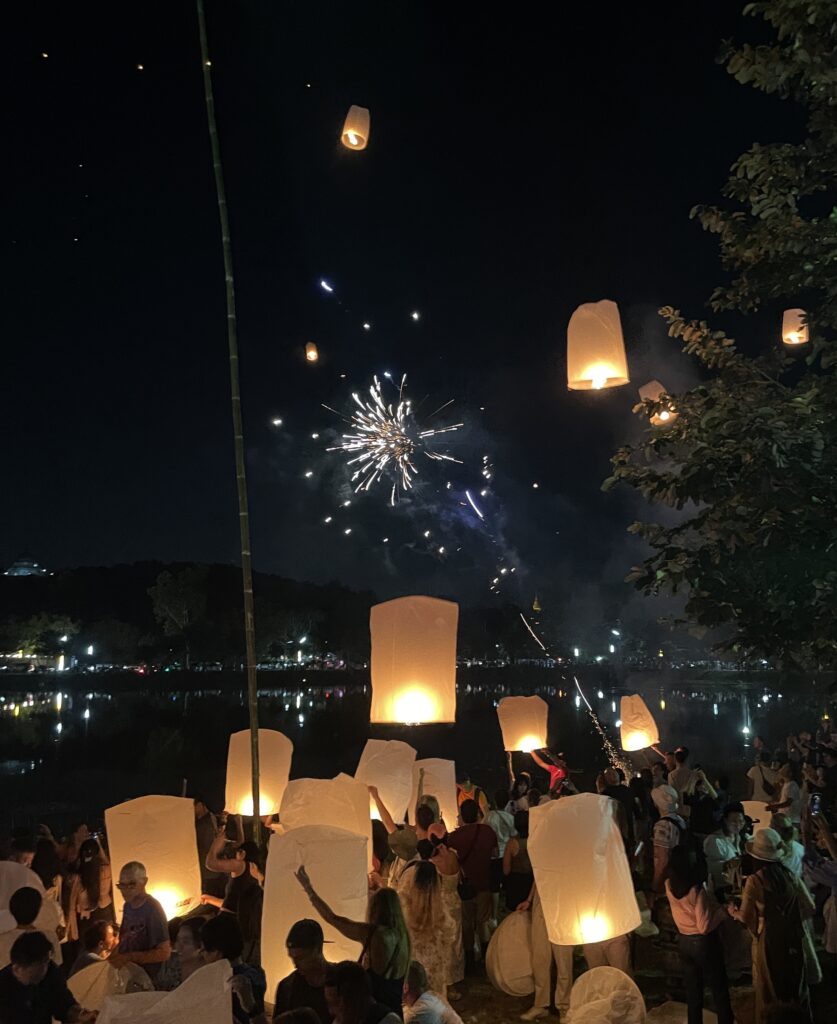
If your trip overlaps with Yi Peng (Lantern Festival) in November, you’re in luck. It’s a magical sight: thousands of glowing lanterns released into the sky as locals make wishes for the year ahead.
Join a mass lantern release outside the city, or wander the Old City during the festivities, where temples are decorated, and locals light candles and lanterns around the moat.
Just be sure to book accommodations well in advance. This is Chiang Mai at its most enchanting.
Shop at the Sunday Walking Street Market
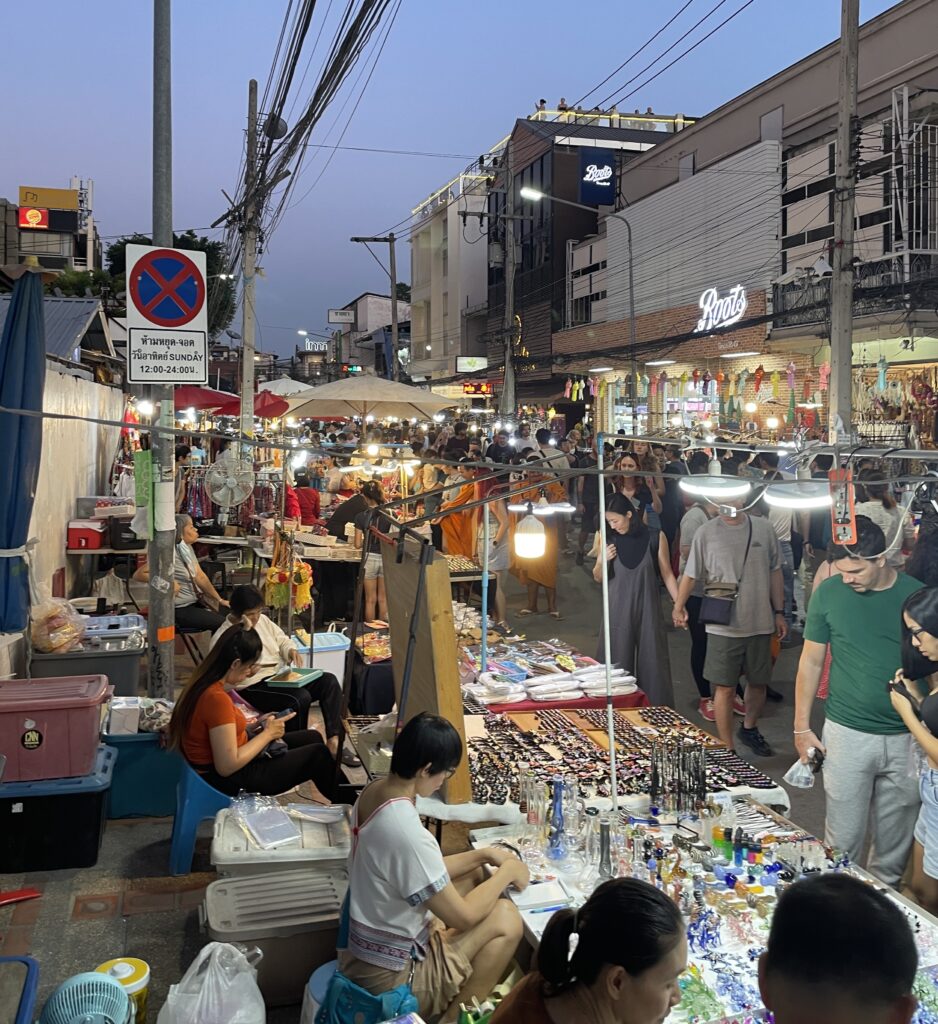
Held every Sunday evening, this is Chiang Mai’s most beloved street market. Starting at Tha Phae Gate, the market stretches along Ratchadamnoen Road with hundreds of stalls.
You’ll find handmade crafts, clothing, snacks, artwork, and live music performances. The vibe is festive, laid-back, and ideal for picking up meaningful souvenirs from Thailand.
Come early (5:00 PM-ish) if you want to beat the shoulder-to-shoulder crowds.
Catch the Sunset from Wat Umong
Nestled in a forested area southwest of the city, Wat Umong offers a peaceful alternative to the more crowded temples.
Known for its ancient tunnel system, moss-covered chedis, and forest paths with Buddhist proverbs on wooden signs, it feels more like a retreat than a tourist site.
It’s a great spot to catch a quiet sunset and reflect after a busy day.
💡 Pro tip: You can combine Doi Suthep and Wat Umong on one evening tour.
Visit the Chiang Mai City Arts & Cultural Center
Housed in a colonial-style building right in the center of the Old City, this museum provides an excellent overview of Chiang Mai’s history and traditions.
The Chiang Mai City Arts & Cultural Center is well-organized and interactive, with exhibits on Lanna culture, migration, and daily life in centuries past.
It’s air-conditioned too, a solid choice for a mid-afternoon cool-down.
Take a Bike Ride Around the Moat
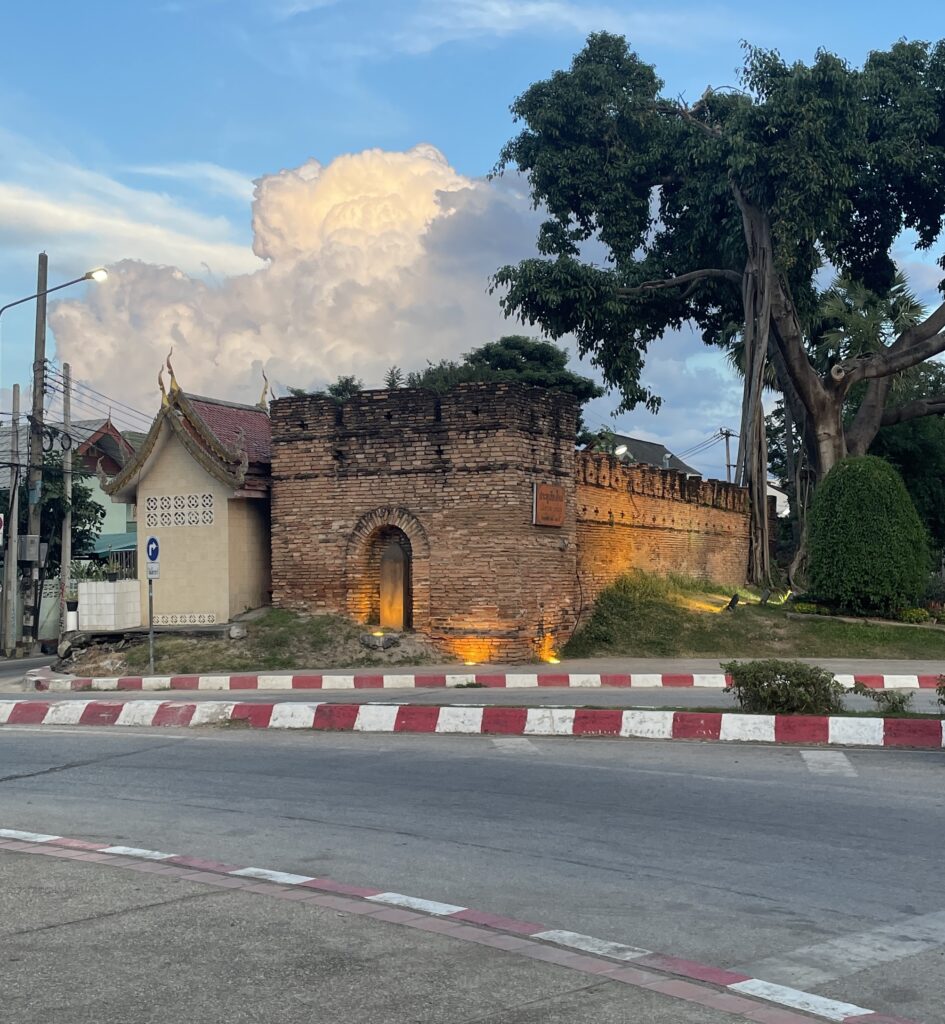
Chiang Mai’s Old City is square-shaped and surrounded by a moat and remnants of old city walls. It’s flat, easy to navigate, and bike-friendly.
Rent a bicycle from one of the many shops near Tha Phae Gate and take a loop.
It’s a scenic way to see daily life, students biking to school, monks collecting alms, and food vendors setting up. Sunrise or just before dusk are ideal times to go.
Let a local guide show you Chiang Mai’s hidden temples and calm lanes on a bike tour:
Explore Bua Thong Sticky Waterfalls
About an hour’s drive north of the city, these unusual limestone sticky waterfalls let you walk up the rocks barefoot, yes, up the waterfall.
The mineral-rich surface gives enough grip to climb without slipping, making it both fun and a little surreal. Bring a swimsuit, water shoes, and your sense of adventure.
Pair it with a visit to the nearby Mae Ngat Dam for kayaking or a floating lunch.
Enjoy Rooftop Drinks Overlooking the City
Wrap up your time in Chiang Mai with rooftop views and cocktails. Places like Xanadu Pub & Restaurant and Rise Rooftop Bar offer sweeping views of the city and surrounding hills.
Whether you want craft cocktails, Thai tapas, or a classic Singha beer with a sunset view, there’s no better way to end your day.
- MAI The Sky Bar at Meliá Chiang Mai: The highest rooftop in town with sweeping views of the Old City and beyond
- Rise Rooftop Bar at Akyra Manor in Nimman: Sleek, modern, and perfect for sunset cocktails
- HIDELAND.cnx in the Chang Moi area: Relaxed, scenic, and ideal for a casual drink with mountain
Visit the White Temple from Chiang Mai
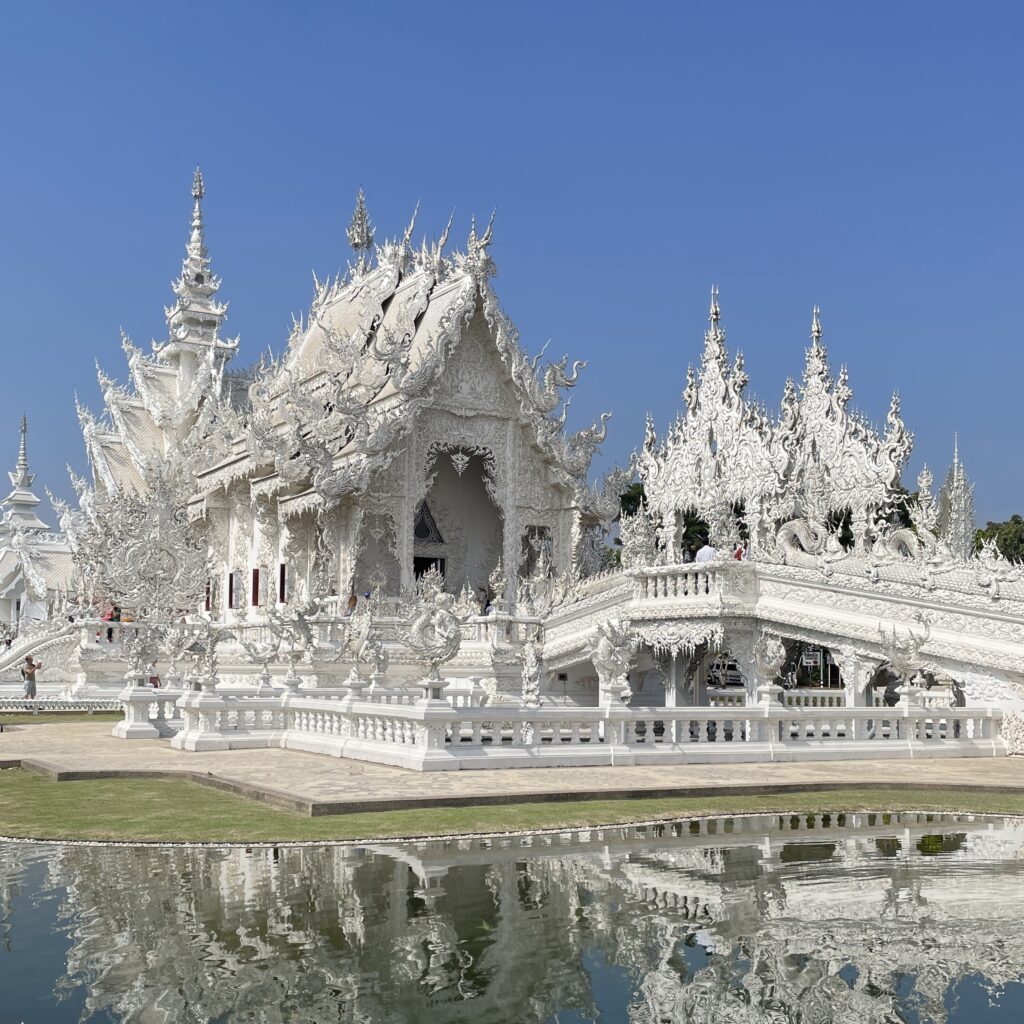
Often included as a Chiang Rai day trip, Wat Rong Khun (White Temple) is one of Thailand’s most surreal and photogenic temples.
Though technically in Chiang Rai, many travelers combine it with Chiang Mai; the drive takes about three hours each way.
This sparkling modern masterpiece, with its intricate mirrored mosaic and sculptural details, feels like stepping into fantasy art.
A visit here makes an unforgettable extension to your Chiang Mai itinerary if you have an extra day to explore Northern Thailand beyond the city limits.
Explore Chiang Mai’s Specialty Coffee Shops
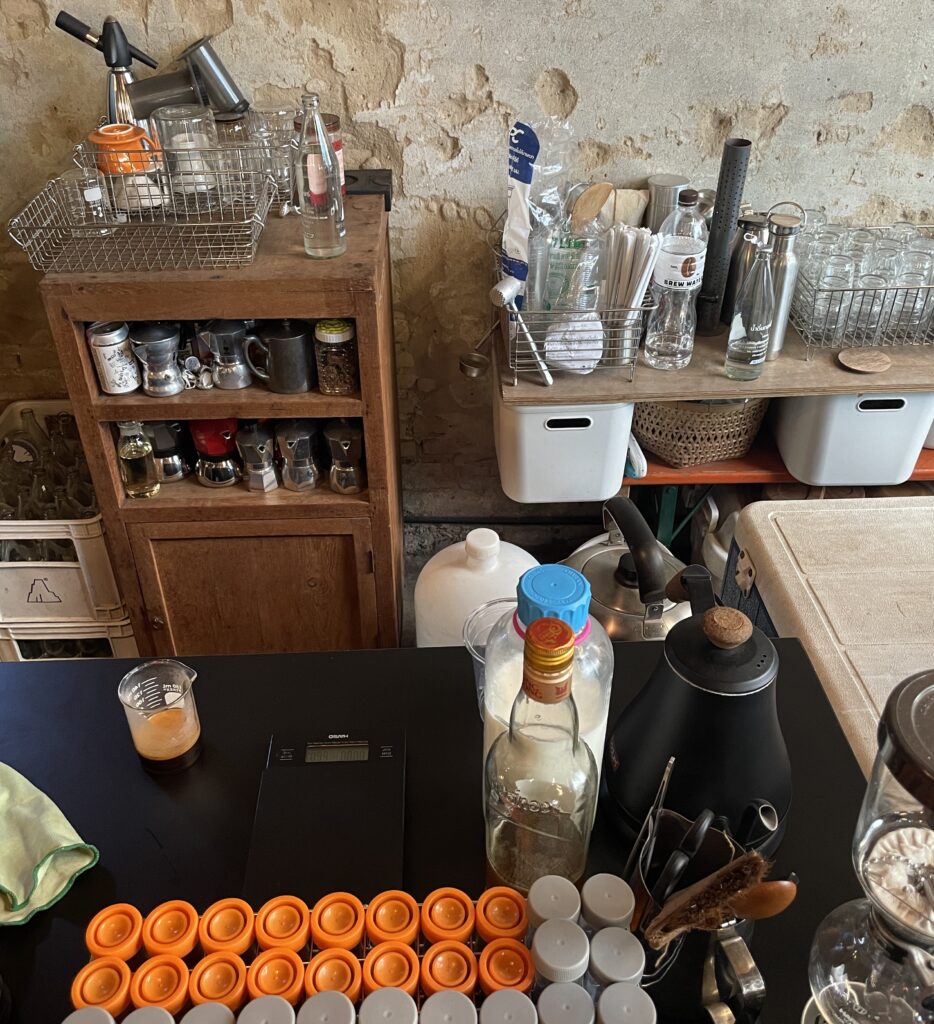
Chiang Mai has quietly become the coffee capital of Thailand, rivaling even Bangkok and Phuket.
Neighborhoods like Nimmanhaemin, Wat Ket, and Santitham are dotted with third-wave cafés serving single-origin Northern Thai beans roasted in-house.
Top picks include Ristr8to, Flannel, and Graph Café, each with unique brews and interior styles perfect for both remote workers and photography lovers. By the way, this photo was taken at Flo Coffee Brewers, give them a try!
A Chiang Mai coffee tour blends caffeine with culture, featuring café crawls that combine coffee tasting, craft snacks, and local art.
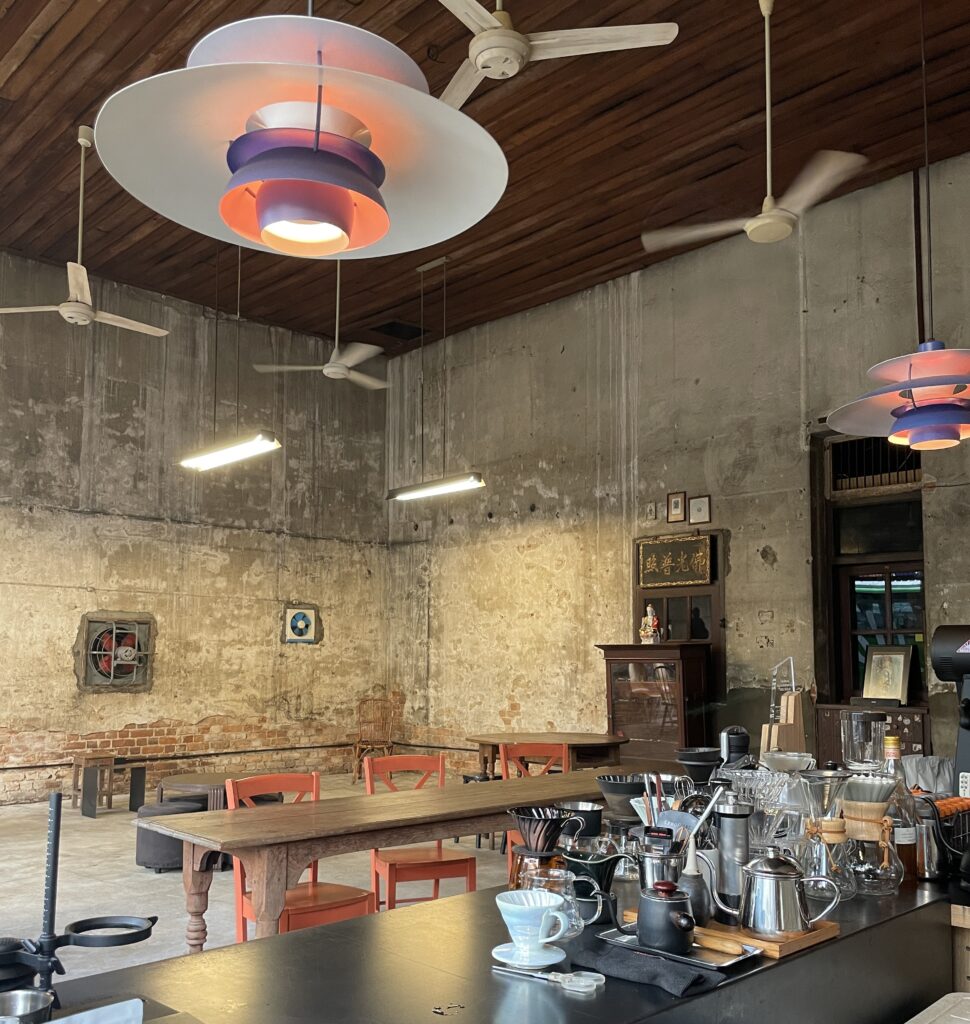
Getting Around Chiang Mai
Getting around Chiang Mai isn’t difficult, but it does require knowing your options. The city isn’t as compact as places like Luang Prabang or Hoi An, so having a transport strategy can really streamline your trip.
Most travelers rely on walking within neighborhoods or just take Grab rides across the city via scooter or car. But there are plenty of quirks to note.
Airport Transfers: Use the Grab app when arriving at Chiang Mai International Airport, or take an official airport taxi, which is reliable and runs on a flat rate of around 150–200 THB. Unlike in some other Thai cities, you won’t need to worry about haggling or shady meters here.
Walking: Chiang Mai’s Old City is extremely walkable, with temples, markets, and cafés densely packed within the square moat. Nimman is also walkable, though less scenic. Just note that sidewalks are often narrow, uneven, or blocked by vendors and parked scooters.
Grab App: Just like elsewhere in Southeast Asia, Grab is the most popular ride-hailing app in Chiang Mai. It’s generally cheap, safe, and way easier than negotiating with tuk-tuk drivers. Choose between motorbike taxis or regular cars.
Tuk-Tuks: Yes, they’re fun, but they’re not cheap. Rides are rarely metered and always require bargaining, so think of tuk-tuks more as a cultural experience than a budget-friendly option. Always negotiate and agree on a price before hopping in.
Songthaews (Red Trucks): These are shared taxis that operate similarly to buses but without fixed stops. You flag one down, tell the driver your destination, and they’ll let you know if they’re heading in that direction. Prices vary depending on distance but usually range between 30–60 THB.
Scooter Rentals: Renting a motorbike gives you maximum freedom, especially if you’re staying longer or want to explore outside the city. But Chiang Mai traffic can get hectic, and roads leading into the hills can be steep. Only rent if you’re experienced and have insurance that covers it.
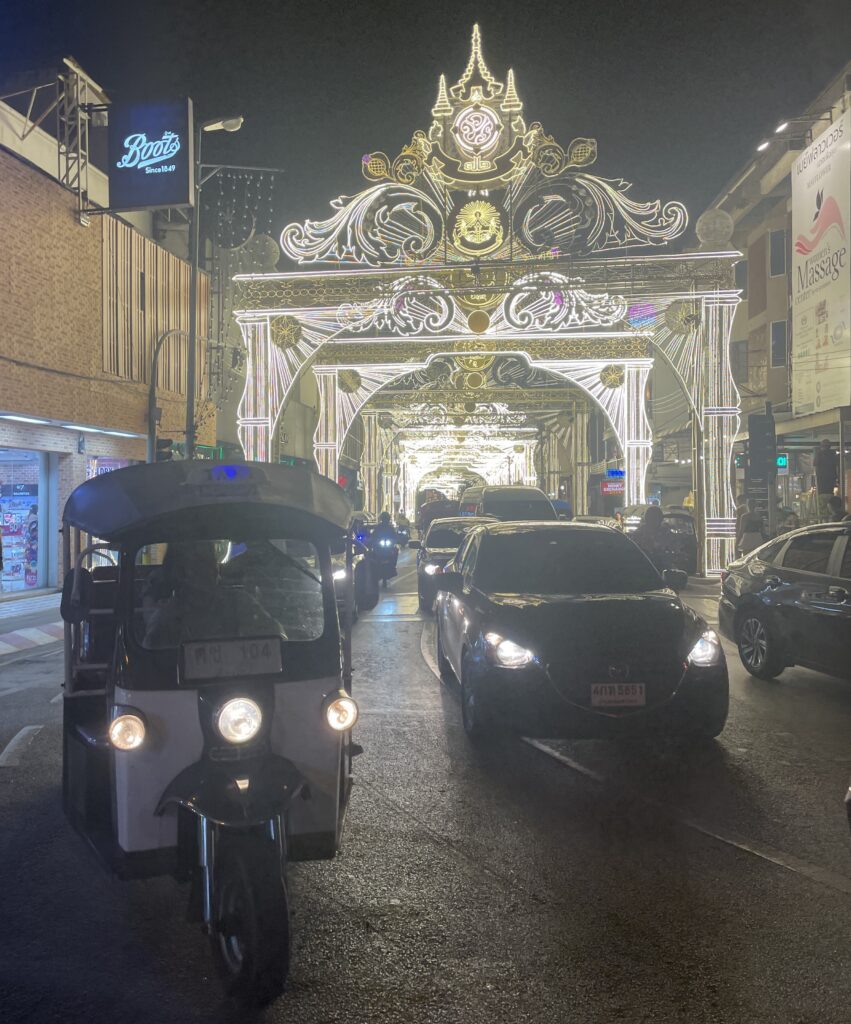
Best Time to Visit Chiang Mai
Chiang Mai experiences three main seasons: cool, hot, and rainy. Your experience will shift dramatically depending on when you visit, from smoky skies to vibrant flower festivals.
Cool Season (November to January): This is Chiang Mai’s peak season. Temperatures are comfortable (15–28°C or 59–82°F), skies are clear, and the city is buzzing with events. It’s also when the famous Yi Peng Lantern Festival usually takes place in November.
Hot Season (March to May): It gets hot like, 35°C+ (95°F+). The downside? February through April can also bring the “burning season,” when farmers burn crops and air quality dips. If you’re sensitive to pollution, avoid this period.
Rainy Season (June to October): Expect afternoon showers and high humidity. While the rain can be inconvenient, it usually doesn’t last all day, and the landscapes turn lush and green. Prices drop and crowds thin, so it’s great if you’re okay with some weather unpredictability.
Tip: If you’re planning to visit national parks, waterfalls, or do trekking, the cool and early rainy seasons are best for greenery and flow.
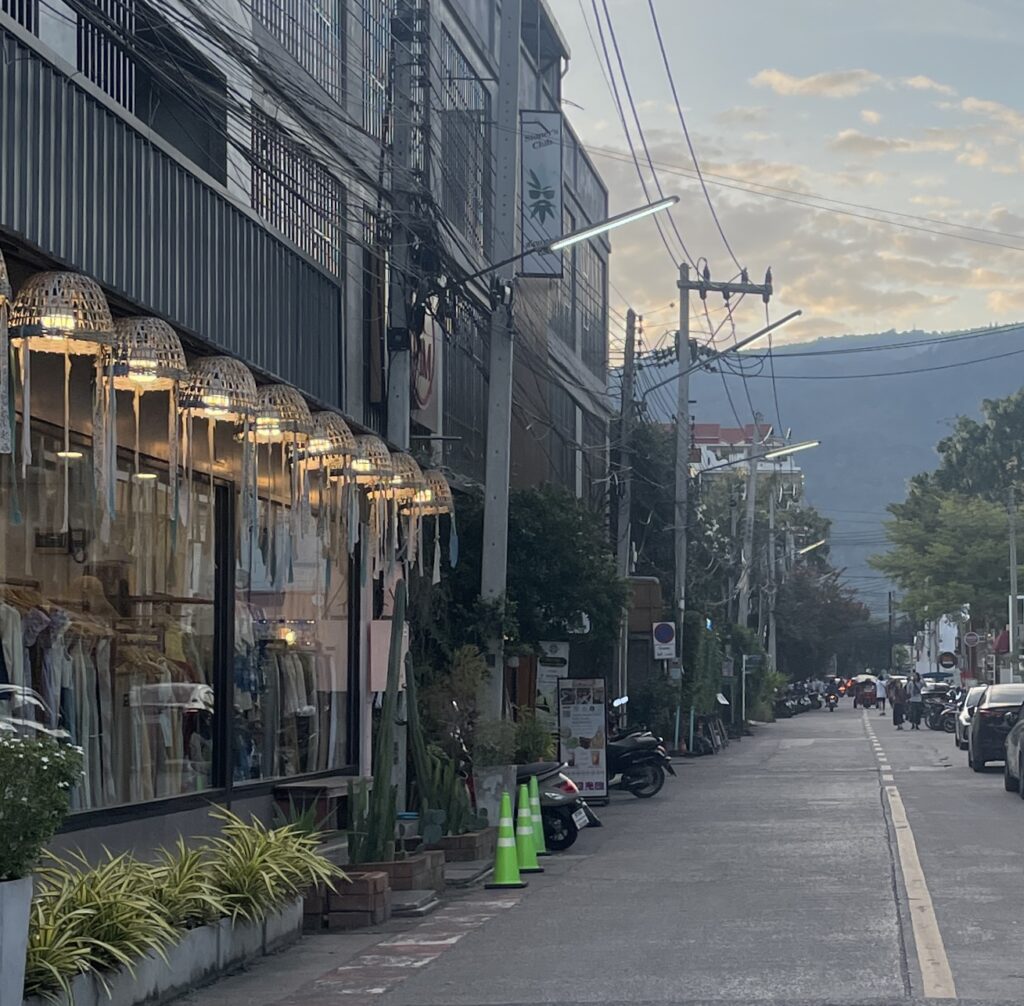
Final Thoughts: Top Things to Do in Chiang Mai
Chiang Mai blends old and new, spiritual and adventurous, rustic and refined. It’s a city you feel as much as you see, in the chants of monks, the taste of Khao Soi, the cool temple breezes, and the buzz of night markets.
I absolutely adore this city. Life here moves at a slower, calmer rhythm that feels rare for a city.
Even the traffic is polite; a local once told me that honking is considered rude in Chiang Mai. Stroll the Old City, spot the mountains in the distance, and you’ll understand why this place feels instantly relaxing yet full of life.
Chiang Mai might not be the first destination that comes to mind when planning a romantic getaway. Still, it’s easily one of the best places in Thailand for couples, especially those seeking to immerse themselves in Thai culture, enjoy a variety of activities, and discover the beauty of northern Thailand.
Whether you spend four days or a whole month, Chiang Mai leaves an imprint. Let it surprise you. Let it slow you down. And don’t be surprised if you find yourself booking a return trip before you’ve even left.
It’s one of those rare places that meets you where you’re at, whether you’re seeking clarity, creativity, or just a damn good meal. From sunrise meditations to late-night bites, this is a city that truly stays with you.
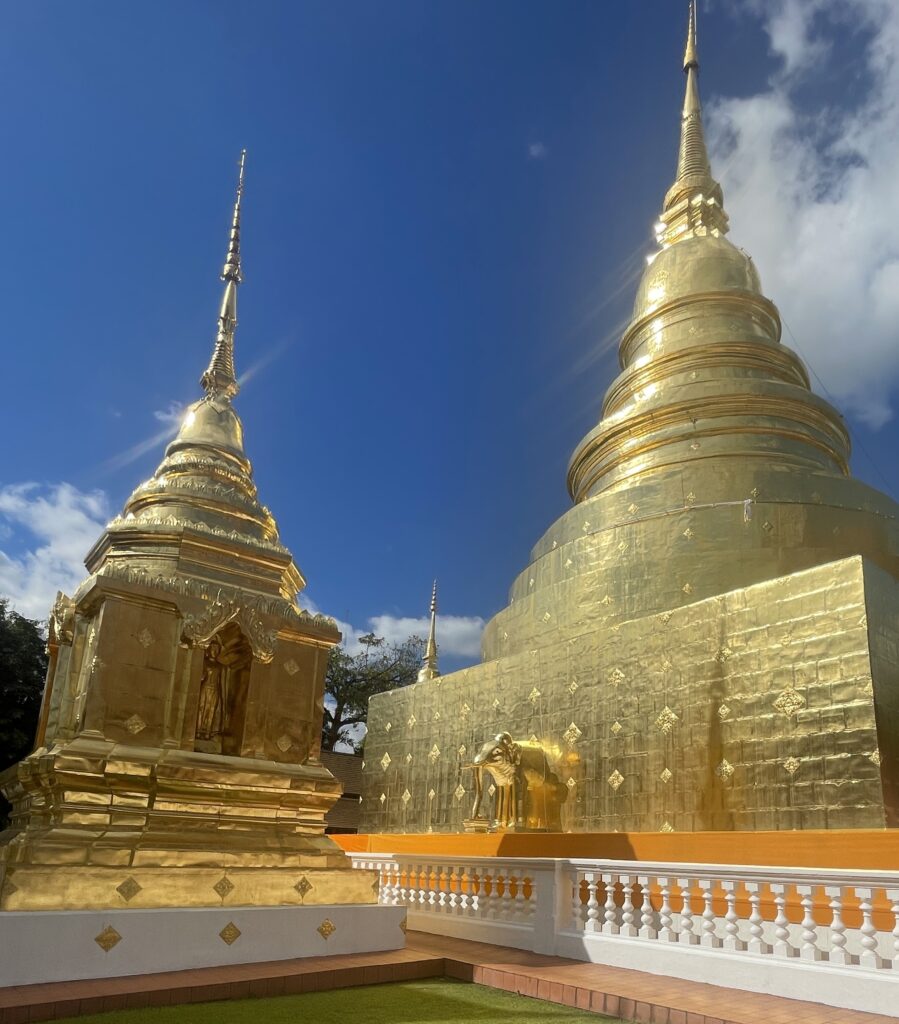
Can I visit both Chiang Mai and the White Temple in one day?
Yes, the White Temple (Wat Rong Khun) in Chiang Rai is often included in Chiang Mai day trip itineraries. Although it’s a 3‑hour drive one way, visiting the White Temple, so expect a long day.
What’s the best hike to do near Chiang Mai?
The Monk’s Trail up to Wat Phra That Doi Suthep is frequently ranked among the best mountain hikes in Chiang Mai.
This scenic, forested pathway leads to the spiritual mountain temple and rewards hikers with views and peaceful forest shrines along the way.
Where can I find authentic street food tours in Chiang Mai?
Chiang Mai is famous for its food scene, and Chiang Mai food tours help travelers explore local specialties, from Khao Soi to Khan Tohk to Sai Ua (Northern sausage).
Is a cooking class worth doing in Chiang Mai?
Yes it really is, a Chiang Mai cooking class typically starts with a tour of a fresh market (like Warorot) and ends in the kitchen where you learn to make Northern Thai dishes such as Khao Soi and gapao kai.
It’s immersive, fun, and one of the best ways to bring Chiang Mai food home with you.

